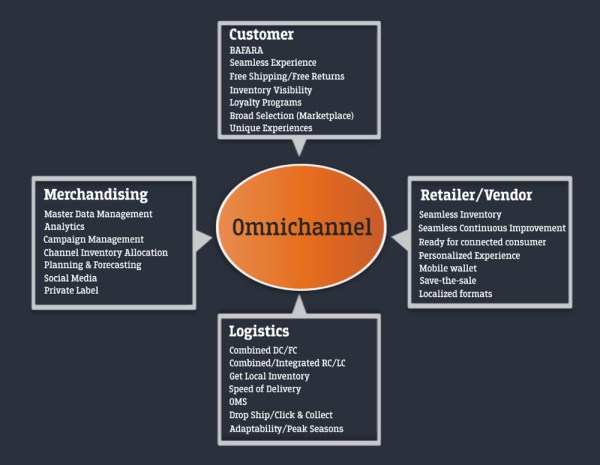This post has already been read 16348 times!

We have all experienced the evolution of the complexity and sophistication of supply chains. Even the concepts surrounding today’s supply chains have evolved in complexity and sophistication. One concept that has evolved rapidly is omnichannel. The evolution of omnichannel has occurred as a result of learning more and more about the implications of what began as a relatively simple concept. Five years ago the concept of omnichannel was created in order to address the requirement that customers should receive a single view of a company, independent of the channel through which customers were interacting with a company. It is from this relatively simple requirement that today’s complex and sophisticated meaning of omnichannel has evolved.
The challenge with defining omnichannel today is that it is used to represent a wide diversity of meanings. These multiple meanings of omnichannel result in confusion and misunderstanding. Rather than diving into the confusion and misunderstanding of omnichannel, allow me to move onto the correct meaning of omnichannel. There are four different views of the concept omnichannel.
These four views are:
- Customer View
- Retailer / Vendor View
- Logistics View
- Merchandising View

Figure 1 illustrates these four views and presents seven key attributes for each of the four views. The purpose of this blog is not to explain the 28 attributes of omnichannel. For you to better understand these attributes I recommend viewing my newest thought leadership video, The Titans: Alibaba, Amazon, and Walmart: Game Changing Strategies: Time For You To Respond!
The purpose is to make clear that implementing a few attributes or one or two of the four views does not result in a company being an omnichannel champion. CEOs speaking about how great they are at omnichannel because they can pick eCommerce orders from stores, check inventory status online, or have “Click & Collect” capabilities is not accurate and is counterproductive to people grasping the realities of omnichannel. To be an omnichannel champion a company must implement all four views of omnichannel into their supply chain. This should be a key objective for all retailers, wholesalers, distributors, and consumer products companies. How to do accomplish? A good start is by answering the below seven omnichannel champion questions:
- What do you need to do to become great in all your channels?
- What is your omnichannel strategy and roadmap?
- What changes in process, organizational structure and technology are required to accomplish your omnichannel strategy?
- What changes in logistics and merchandising are required to accomplish your omnichannel strategy?
- How to best address channel conflict and not allow it to slow down being an omnichannel champion?
- How to align your supply chain capabilities with your omnichannel strategy?
- How to evolve your omnichannel capabilities to make them major game changers?
It is time to grasp the four views of omnichannel. In order to maximize profitable growth, you must begin the robust pursuit of the sophisticated and complex realities of omnichannel, via the seven champion questions listed above.
- Optionality: The Critical Supply Chain Imperative for 2024 - January 18, 2024
- The Death of the Supply Chain and Birth of the Digital Supply Network - January 26, 2021
- Yahoo Yard Sale: What is Verizon’s Play? - August 4, 2016
